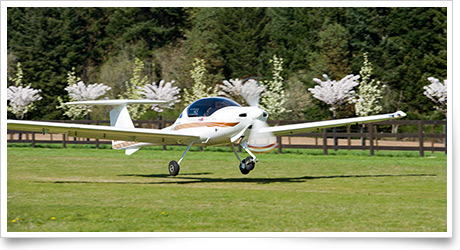training tipsOverflying the airport
Larger airports bustle with traffic and demand the most careful adherence to taxi routes after landing, but don’t think you can shun recommended operating procedures at that quiet country airfield that is today’s destination. In either case, regulations mandate that you familiarize yourself with “all available information” during your planning.
It may surprise you to discover the wide variation in the amount of information that may be available from place to place. The less there is, the more you must rely on standardized methods for assuring safe operation.
If your destination has no on-field weather reporting, and if the airport is listed as “unattended” or with very limited service hours, you may not find out one of the most important pieces of information until you arrive: which runway to use for landing.
You could try to get a heads-up about that by monitoring the common traffic advisory frequency (CTAF) and hearing another pilot’s broadcast. Then be sure to locate and check the windsock to confirm what you heard.
What should you do if the radio remains silent?
“If other aircraft are not in the pattern, then traffic indicators on the ground and wind indicators must be checked to determine which runway and traffic pattern direction should be used,” advises Chapter 7 of the Airplane Flying Handbook.
Don’t forget these anti-collision procedures as you overfly the airport to check the indicators: Remain well above the airport’s traffic pattern altitude (and let other traffic know your position and intentions). Just because you did not hear a CTAF broadcast does not mean that a no-radio aircraft, or an inbound aircraft previously tuned to another ATC frequency, isn’t present.
Then, “when the proper traffic pattern direction has been determined, the pilot should then proceed to a point well clear of the pattern before descending to the pattern altitude,” says the Airplane Flying Handbook.
Different airports require different techniques. But when it comes to their demands on pilot skill and safety consciousness, all airports are created equal. training productsASA has released its 2013 Instrument Rating Test Prep guide. The book includes study questions for the instrument rating, instrument flight and ground instructor, and foreign pilot FAA knowledge exams, supported with answers and explanations. The questions are arranged into chapters based on subject matter to promote better understanding, aid recall, and thus provide a more efficient study guide. The cost of the guide is $24.95.
Gleim’s Sport Pilot Knowledge Test Software contains everything you need to study for the sport pilot FAA knowledge test in one easy-to-use program. The software download includes study outlines, charts, figures, and FAA knowledge database; study sessions; comprehensive explanations; unlimited practice exams; and a sign-off to take the exam. See the website for pricing.
Note: Products listed have not been evaluated by ePilot editors unless otherwise noted. AOPA assumes no responsibility for products or services listed or for claims or actions by manufacturers or vendors. final examQuestion: How do I report a near midair collision to the FAA?
Answer: Pilots and/or flight crew members involved in near midair collisions (NMAC) are urged to report each incident immediately by radio or telephone to the nearest FAA ATC facility or flight service, or in writing in lieu of reporting over phone or radio, to the nearest flight standards district office (FSDO). Read more in the Aeronautical Information Manual (AIM) 7-6-3.
Got a question for our technical services staff? Email [email protected] or call the Pilot Information Center, 800/872-2672. Don’t forget the online archive of “Final Exam” questions and answers, searchable by keyword or topic. |
 Make sure during your dual and solo cross-country flying that
Make sure during your dual and solo cross-country flying that 

